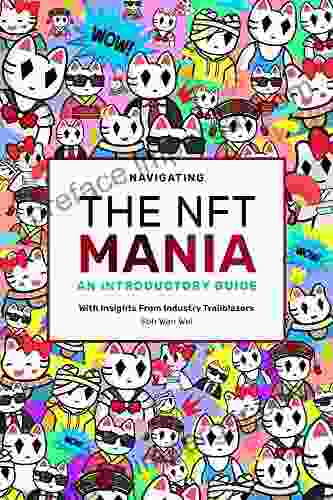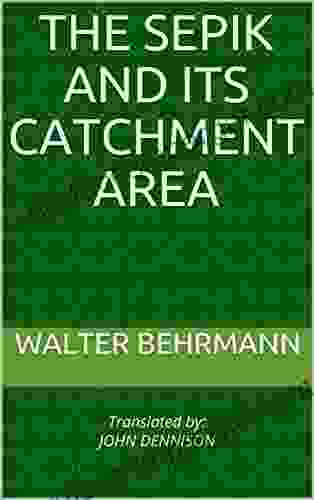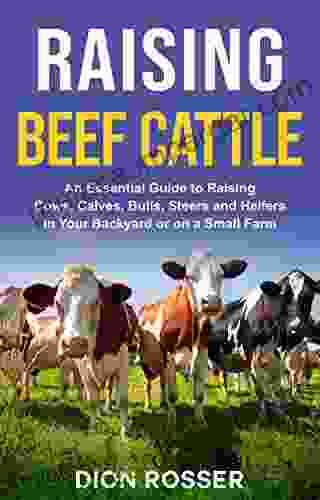Exploring the Sepik and Its Enchanting Catchment Area

The Sepik River, located in the northwestern region of Papua New Guinea, is one of the largest and most iconic rivers in the world. Its vast catchment area encompasses a diverse range of landscapes, from towering mountains to lush rainforests, and is home to a myriad of unique cultures and traditions. The book "The Sepik and Its Catchment Area" by the University of Otago Working Papers series delves into the rich history, ecology, and cultural significance of this extraordinary region.
4.7 out of 5
| Language | : | English |
| File size | : | 20604 KB |
| Text-to-Speech | : | Enabled |
| Screen Reader | : | Supported |
| Enhanced typesetting | : | Enabled |
| Print length | : | 147 pages |
| Lending | : | Enabled |
| X-Ray for textbooks | : | Enabled |
| Paperback | : | 55 pages |
| Item Weight | : | 2.89 ounces |
| Dimensions | : | 5.83 x 0.14 x 8.27 inches |
Geographical Significance
The Sepik River originates in the Central Ranges of Papua New Guinea and flows for over 1,100 kilometers before emptying into the Pacific Ocean. Its catchment area covers an area of approximately 70,000 square kilometers and includes the provinces of East and West Sepik, as well as parts of the Southern Highlands and Enga provinces. The river has played a vital role in the development of the region, providing a source of food, water, and transportation for the local communities.
The Sepik River is influenced by the monsoon winds, which bring heavy rainfall to the catchment area during the wet season from December to April. The river's flow rate can increase dramatically during this period, leading to flooding in the surrounding areas. During the dry season from May to November, the river's flow rate decreases, and the water level drops exposing sandbars and islands.
Ecological Diversity
The Sepik River and its catchment area support an incredibly diverse range of ecosystems and species. The river itself is home to over 300 species of fish, including the iconic barramundi and the endangered Sepik arawana. The surrounding rainforests are teeming with wildlife, including birds, reptiles, mammals, and insects. The area is also home to a number of endemic species, including the Sepik bluebird and the Sepik shovel-billed kookaburra.
The Sepik River is also a vital nesting and feeding ground for migratory birds, including the eastern curlew and the bar-tailed godwit. The river's floodplains and wetlands provide important habitat for these birds, and the area has been designated as a Ramsar wetland of international importance.
Cultural Significance
The Sepik River and its catchment area have been home to human habitation for thousands of years. The region is inhabited by a diverse range of indigenous cultures, each with its own unique traditions and languages. The river has served as a vital artery for communication and trade between these cultures, and it has also played a central role in their spiritual beliefs and practices.
The people of the Sepik River are known for their skilled artisanship, and they produce a wide range of traditional crafts, including wood carvings, pottery, and basketry. The area is also home to a number of important cultural sites, including the Crocodile Islands, where the people of the Iatmul tribe have been practicing crocodile mummification for centuries.
Threats and Conservation
The Sepik River and its catchment area face a number of threats, including deforestation, pollution, and climate change. Deforestation is a major concern, as it can lead to soil erosion, loss of habitat, and flooding. Pollution from mining and other industrial activities is also a threat to the river's ecology. Climate change is also expected to have a significant impact on the region, with rising sea levels and changes in rainfall patterns likely to affect the river's flow rate and ecosystem.
There are a number of conservation initiatives underway to protect the Sepik River and its catchment area. These initiatives include the establishment of protected areas, the development of sustainable land use practices, and the promotion of ecotourism.
The Sepik River and its catchment area is a truly remarkable region of the world. Its rich history, diverse ecology, and cultural significance make it a must-visit destination for anyone interested in exploring the natural and cultural wonders of Papua New Guinea. The book "The Sepik and Its Catchment Area" by the University of Otago Working Papers series provides a comprehensive overview of this extraordinary region and is a valuable resource for anyone interested in learning more about its history, ecology, and culture.
Learn more about the Sepik River and its catchment area
4.7 out of 5
| Language | : | English |
| File size | : | 20604 KB |
| Text-to-Speech | : | Enabled |
| Screen Reader | : | Supported |
| Enhanced typesetting | : | Enabled |
| Print length | : | 147 pages |
| Lending | : | Enabled |
| X-Ray for textbooks | : | Enabled |
| Paperback | : | 55 pages |
| Item Weight | : | 2.89 ounces |
| Dimensions | : | 5.83 x 0.14 x 8.27 inches |
Do you want to contribute by writing guest posts on this blog?
Please contact us and send us a resume of previous articles that you have written.
 Book
Book Novel
Novel Page
Page Chapter
Chapter Text
Text Story
Story Genre
Genre Reader
Reader Library
Library Paperback
Paperback E-book
E-book Magazine
Magazine Newspaper
Newspaper Paragraph
Paragraph Sentence
Sentence Bookmark
Bookmark Shelf
Shelf Glossary
Glossary Bibliography
Bibliography Foreword
Foreword Preface
Preface Synopsis
Synopsis Annotation
Annotation Footnote
Footnote Manuscript
Manuscript Scroll
Scroll Codex
Codex Tome
Tome Bestseller
Bestseller Classics
Classics Library card
Library card Narrative
Narrative Biography
Biography Autobiography
Autobiography Memoir
Memoir Reference
Reference Encyclopedia
Encyclopedia Donald C Cooper
Donald C Cooper Patrick S Collins
Patrick S Collins Dustin Morrow
Dustin Morrow Don Cipriani
Don Cipriani Ed Gibney
Ed Gibney Donelle Hargrave
Donelle Hargrave Donald L Miller
Donald L Miller Kelly Walk Hines
Kelly Walk Hines Scott Zesch
Scott Zesch Murat Ersoy
Murat Ersoy Endall Beall
Endall Beall Edgar Rice Burroughs
Edgar Rice Burroughs Michael J Hoffman
Michael J Hoffman Donald Bain
Donald Bain E P O Donnell
E P O Donnell Doug Mcgill
Doug Mcgill Dr Priyanka Ghose
Dr Priyanka Ghose Marco Tavanti
Marco Tavanti Ed Perratore
Ed Perratore Donald W Rogers
Donald W Rogers
Light bulbAdvertise smarter! Our strategic ad space ensures maximum exposure. Reserve your spot today!

 Diego BlairNavigating the NFT Mania: An Introductory Guide to Understanding Non-Fungible...
Diego BlairNavigating the NFT Mania: An Introductory Guide to Understanding Non-Fungible...
 Rex HayesMissionary Working with Nigerian Church Leaders In Pre Biafra Nigeria In 1963...
Rex HayesMissionary Working with Nigerian Church Leaders In Pre Biafra Nigeria In 1963... Jorge AmadoFollow ·10.2k
Jorge AmadoFollow ·10.2k Fyodor DostoevskyFollow ·4.8k
Fyodor DostoevskyFollow ·4.8k F. Scott FitzgeraldFollow ·9.9k
F. Scott FitzgeraldFollow ·9.9k Tom ClancyFollow ·19k
Tom ClancyFollow ·19k Ashton ReedFollow ·7.6k
Ashton ReedFollow ·7.6k Andres CarterFollow ·14.6k
Andres CarterFollow ·14.6k Harry CookFollow ·10.3k
Harry CookFollow ·10.3k Jayson PowellFollow ·19.6k
Jayson PowellFollow ·19.6k

 Donovan Carter
Donovan CarterUnveiling the Tapestry of Western Civilization:...
: Step into the annals of Western...

 Pablo Neruda
Pablo NerudaUnveil the Secrets: The Welsh Murder Mysteries
Prepare to be captivated as...

 Benji Powell
Benji PowellNot Without Our Consent: Lakota Resistance to...
In the mid-20th...

 Ryan Foster
Ryan FosterUncover the Heroic Exploits of U.S. Navy Special Warfare...
The annals of modern warfare are replete...

 Gage Hayes
Gage HayesPlan to Provide Quality Care for All While Saving...
The healthcare...

 Felix Carter
Felix CarterUnveiling the Timeless Wisdom of Machiavelli: The...
Niccolò...
4.7 out of 5
| Language | : | English |
| File size | : | 20604 KB |
| Text-to-Speech | : | Enabled |
| Screen Reader | : | Supported |
| Enhanced typesetting | : | Enabled |
| Print length | : | 147 pages |
| Lending | : | Enabled |
| X-Ray for textbooks | : | Enabled |
| Paperback | : | 55 pages |
| Item Weight | : | 2.89 ounces |
| Dimensions | : | 5.83 x 0.14 x 8.27 inches |








